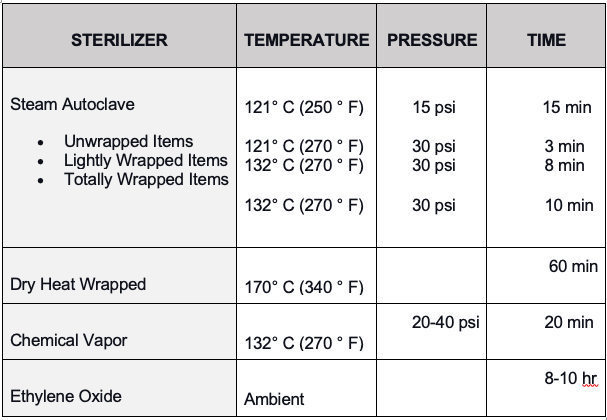
Autoclave technology has improved over the years to the point where it is now possible to safely and effectively use it. It is possible to achieve a high degree of sterility with this process and maintain the desired level of quality control.
This sterilization process is still necessary in the medical world to ensure that all items are sterilized and stored correctly.
In healthcare and industrial applications, autoclaves are typically known as steam sterilizers. In an autoclave, items placed in a pressure vessel are heated up to kill harmful bacteria, viruses, fungi, and spores. It is then heated to the appropriate sterilization temperature and held at that temperature for a predetermined amount of time. As a result, the moisture in the steam affects bacteria and spores by efficiently transferring heat to the items.
The medical profession uses the term "autoclave" in describing Steam Sterilizers. For successful autoclaving, specific parameters and requirements are set. Also, a suitable biological indicator is added to the sterilization process.
Autoclaving is following the primary application of four parameters for successful sterilization. Exposing each piece of equipment to steam under the required temperature and pressure for the specified time. Thus, the principle of making the steam, pressure, temperature and time work together must be conducted systematically. These four parameters are manipulatable to different cycle set-ups to sterilize diverse types of loads.
One of the conditions in autoclaving is the quality of saturated steam. Steam sterilization is achieved with dry saturated steam and entrained water with a dryness fraction of ≥97%. Steam experiences the most significant heat transfer as it approaches boundary conditions.
Condensation is not possible when it is dry or gaseous, so its effectiveness is compromised. High pressure allows microorganisms to be killed more quickly by high temperatures. The efficiency of the analyzing process depends on the accuracy of the equipment's temperature.
The temperature is crucial to microbicidal activity. Temperatures from 121°C (250°F) to 132°C (270°F) usually are employed in steam sterilization. The temperatures must be maintained for a minimum period to kill off unwanted microbes.
Different types of items require different lengths of time for sterilization. Metal, rubber, plastic, and lumen items are among the available types. The required time can also be affected by how the package is packaged and the type of sterilizer used. It is essential to maintain the required time when sterilizing any equipment to keep it practical.
When designing an autoclave for the first time or upgrading an existing one to improve efficiency, you will need to consider temperature and time requirements. These are the parameters that control the rate and depth of sterilization. The use of autoclaves for sterile processing needs these conditions to be met.
With the four parameters being set, the minimum sterilizing conditions in gravity autoclaving are 121° C (250°F) for the TDT (Thermal Death Time) of 15 minutes using saturated steam with the pressure of at least 15 psi. On the other hand, 132°C (270°F) for 4 minutes is the minimum sterilizing condition in a pre-vacuum sterilizer. Increasing the cycle time is not required but recommended depending upon the make-up and amount of the load. It is to ensure that you will eliminate all unwanted microbes present.
As mentioned earlier, the required time and temperature can significantly be affected by how the packaged is wrapped and what sterilizer is being used. Below is a chart showing the different time and temperature requirements during autoclaving and other processes:

You should understand temperature and time requirements during the sterilization process. It is to help you understand the importance of using the right equipment. Knowing about these things first can save you from purchasing equipment that is either unsuitable or not working correctly.
As previously stated, biological indicators substantiate the instruments used to verify the practical function of autoclaving. Additionally, biological indicators are viable microorganisms. These microorganisms are resistant to sterilization processes, enabling monitoring whether the required sterilization conditions are met when eradicating the undesirable microbes present.
Because they can withstand the high-level sterilization process, bacterial spores become the primary microorganisms used in BIs. The following are some of the toughest microorganisms used as indicators:
The biological indicator's positive result shows that the sterilizer can effectively kill many highly resistant bacterial spores. Users can be confident in the sterilization process by using this indicator.
The use of biological indicators allows qualifying, routing and load monitoring of the autoclave process. They help indicate if the conditions during the steam cycle were satisfactory for producing a particular level of microbial inactivation.
The Association for the Advancement of Medical Instrumentation (AAMI) considers the use of biological indicators to be "the cornerstone for the sterilization process's quality assurance program." The BIs' proof-positive method of confirming the elimination of microbial contaminants is far superior to monitoring with chemical and mechanical indicators. As a result, BI is more reliable than other available indicators.
With the vast options of labelling and taping services available, you deserve to work with the most reliable and trusted brand in the market. Visit Nev's Ink today and make the most of your experience with us.